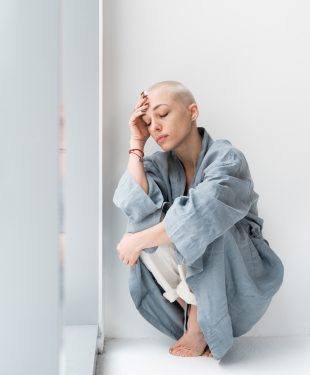Micropigmentation NY is a medical-grade procedure that involves injecting pigments normally into the scalp’s higher dermal layer. The hair follicles in the scalp are replicated throughout this treatment, providing the illusion of a natural shaven head. The number of colored dots per square inch in SMP hair follicles can range from hundreds to thousands. If you’re having trouble with hair loss, here’s some information on the scalp micropigmentation services we provide.
However, following your scalp micropigmentation treatment, you may ask how long the benefits of SMP will stay and what aftercare measures are necessary to preserve long-term SMP results.
Following the aftercare recommendations for scalp micropigmentation is critical following your scalp micropigmentation operation. Do you want to learn how? Continue reading till the conclusion of this article.
Preparation Before Treatment
Scalp micropigmentation (SMP) may be an appropriate treatment method for many different people who are currently experiencing or have previously experienced hair loss as an advanced method of cosmic pigmentation. Whether you are overwhelmed by the various hair loss treatment options available or have been discouraged by previous failed attempts at resolving hair loss, scalp micropigmentation may be the solution for receding hairlines, balding around the crown, or even hair loss caused by disease and medical treatment.
Ensure that you are a candidate for Micropigmentation treatment
Determining whether or not you’re a good candidate for scalp micropigmentation depends significantly on your specific circumstances and type of hair loss, so it’s essential to schedule a consultation with a scalp micropigmentation specialist
Checking skin type
Knowing your skin type is crucial in determining which products would be the most beneficial. Using the wrong products and treatment can actually make your skin worse than improving your skin in the first place.
Shaving

Photo by on Pexels
Before your treatment, your practitioner or artist will give you instructions to follow. In general, you should be able to shave or pluck your hair within 48 hours of receiving the treatment. Specific procedures do not necessitate shaving or plucking.
Eat before the treatment.
It is critical to eat a meal before your procedure. You are also welcome to bring snacks and drinks. If you’re nervous, ask if you can listen to music or watch a movie to distract yourself.
After Treatment
You should treat your scalp as an open wound after SMP treatment. Keep your scalp clean and avoid washing it. For 30 days following your final treatment, avoid chlorinated pools, saunas, steam rooms, or tanning beds. This will guarantee a positive, long-term outcome.
Immediate Aftercare
During the First Four Days
The most important rule to follow when caring for your scalp during this time is to avoid washing your hair. Washing your hair after your SMP procedures may seem very tempting, but don’t do it. Your scalp is still sensitive in the first four days, and adding water to your head can harm it. Furthermore, avoid shaving your head and touching the treated area.
Day 5 through Day 7
During this time, you should avoid:
- Sweating profusely: Try to avoid strenuous cardio sessions during this time. Excessive sweating can cause a halt in the healing process.
- Scrubbing and shampooing – Scrubbing the scalp can aggravate existing wounds, and shampooing will introduce harsh chemicals.
- Sun exposure – UV rays can cause sunburn and sun damage to your scalp.
- Touching with hands – Excessive touching of the scalp with your hands can increase the risk of infection.

Photo by on Pexels
During the first seven days, make sure to drink plenty of water and take any medication as directed. To keep it clean, gently rinse your scalp and wipe it down with a wet cloth.
If you want to shave your head, now is the time to do it. It is critical to use an electric foil shaver. When shaving your head, try to get rid of any scabs that are still visible. Small amounts of water can be applied to your head. You can resume your showering sessions at this time, but remember to take a quick, light shower and avoid sulfate shampoo.
From Day 8 to Day 14,
Your head should look much better and heal nicely from days 8 to 14 following the procedure. It is, however, still recovering. You should double-check that your aftercare routine is still in place. You should still avoid the following in the next 5 days:
- Scratching the scalp – The skin on your scalp may begin to peel in the coming days. It is critical to avoid scratching or picking any scabs that may form.
- Using irritants that may cause inflammation and interfere with the healing process.
- Putting on the moisturizer.
- Shave with a razor blade for 10 days after each procedure session.
Shave or cut your hair carefully if necessary. You can gently wash the treated area with water and soap. Applying a small amount of moisturizer will also help the healing process during this time. However, make certain that it is fragrance-free.
Day 15 and beyond
After 15 days, your scalp may have recovered sufficiently to resume your regular routine. After 15 days, you may be scheduled for your next treatment session. You will be asked to wash your hair and shave your head before your next follow-up appointment.
Long term Aftercare
There are numerous steps and activities that you must complete in order to receive long-term care:
- Do not use chlorinated pools, saunas, or steam rooms for the first month.
- UV rays are harmful to the treated area. As a result, apply sunscreen to your skin before venturing out. Use sunscreen with an SPF of at least 50+. Avoid getting a tan on the treated area for the first month.
- If you want to wash your scalp, use a fragrance-free, antibacterial soap for the first month.
- To keep your scalp moisturized, apply moisturizer immediately after showering and before going to bed.
- AHA-containing products should not be used in the treatment area because they will cause the pigment to fade.
- Avoid products containing a high concentration of alcohol.
Conclusion
As you can see, following the scalp micropigmentation aftercare guide is simple. You simply need to unwind after each session and gradually return to your routine.
There are unique aftercare products that can help you better care for your scalp, so use them confidently.
If you’re ready for your first scalp micropigmentation session, please contact us right away. Our specialists have years of experience with micropigmentation procedures and can assist both men and women with hair loss problems.
Read more lifestyle and health articles at ClichéMag.com
Images provided by Flickr, Unsplash, Pexels, Pixabay & Creative Commons



